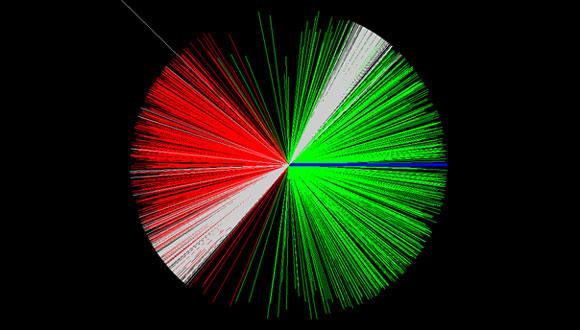Joint Seminar in Nuclear Physics
PROGRAM
14:30 - 14:45 Refreshments
14:45 - 15:45 "Entanglement entropy of Color Glass", Alex Kovner, UConn
Abstract:
I explain that the wave function of the CGC used in the description of high energy hadronic collisions is strongly entangled between the hard and the soft modes. I calculate the entropy associated with this entanglement and discuss some of these properties. Entropy production in high energy collisions is also discussed.
15:45 - 16:15 Coffee Break
16:15 - 17:15 "Precision measurements with trapped antihydrogen atoms", Eli Sarid, NRCN
Abstract:
Comparison of the properties of matter and antimatter is an important basic physics problem. Measurements of the energy transition in trapped antihydrogen and their comparison to the transitions in hydrogen atoms can be used as a sensitive test of CPT symmetry. The ALPHA collaboration in CERN first trapped cold antihydrogen atoms in 2010 [1] and continued to demonstrate the first resonant transitions between levels of trapped antihydrogen atoms in 2012 [2], using microwave radiation to induce transitions between the hyperfine levels of the ground state of the antiatoms. With ALPHA-2, we performed (2016) the first-ever measurement of the resonant transition 1S→2S in antihydrogen, using two-photon laser excitation with 243 nm light [3].
Both laser and microwave measurement showed the response of the antiatoms to resonant frequencies appropriate to exciting normal hydrogen atoms. Recent years of measurements (2016-2018) showed improved trapping and accumulation of antiatoms, and very significant improvement in the precision of the spectroscopic methods [4-7]. The profile of the 1S→2S transition was carefully taken and agrees with its hydrogen counterpart at the level of about 2×10-12. First experiments with the 1S→2P open new venues, including the prospect of laser cooling of the antiatoms and further dramatic improvements in precision. A new system, ALPHA-g, has been constructed to enable measurements of the gravitational free fall of antihydrogen.
[1] Trapped Antihydrogen, Nature 468,673 (2010).
[2] Resonant quantum transitions in trapped antihydrogen atoms, Nature, 483, 439 (2012).
[3] Observation of the 1S–2S transition in trapped antihydrogen, Nature, 541, 506 (2017).
[4] Observation of the hyperfine spectrum of antihydrogen, Nature 548, 66 (2017) [5] Antihydrogen accumulation for fundamental symmetry tests, Nature Communication 8:681 (2017) [6] Characterization of the 1S–2S transition in antihydrogen, Nature 557, 71 (2018) [7] Observation of the 1S–2P Lyman-α transition in antihydrogen, Nature 561, 211 (2018)


